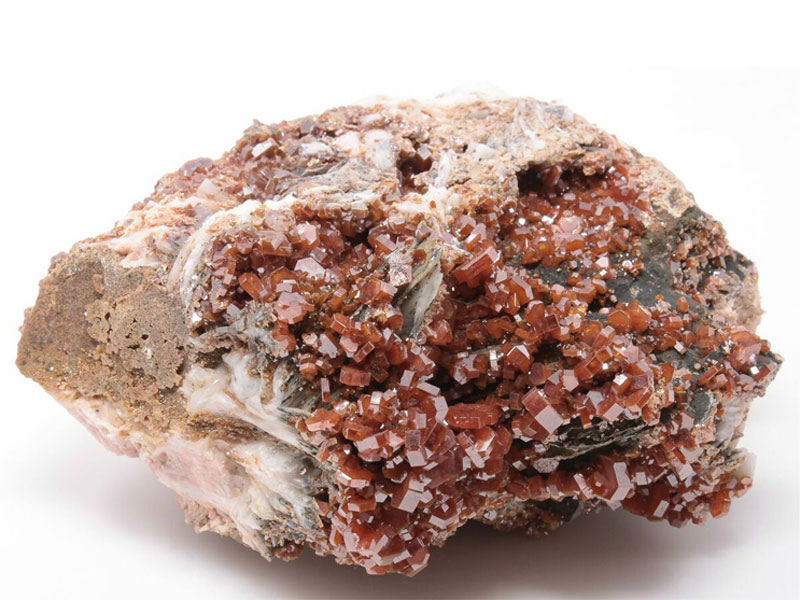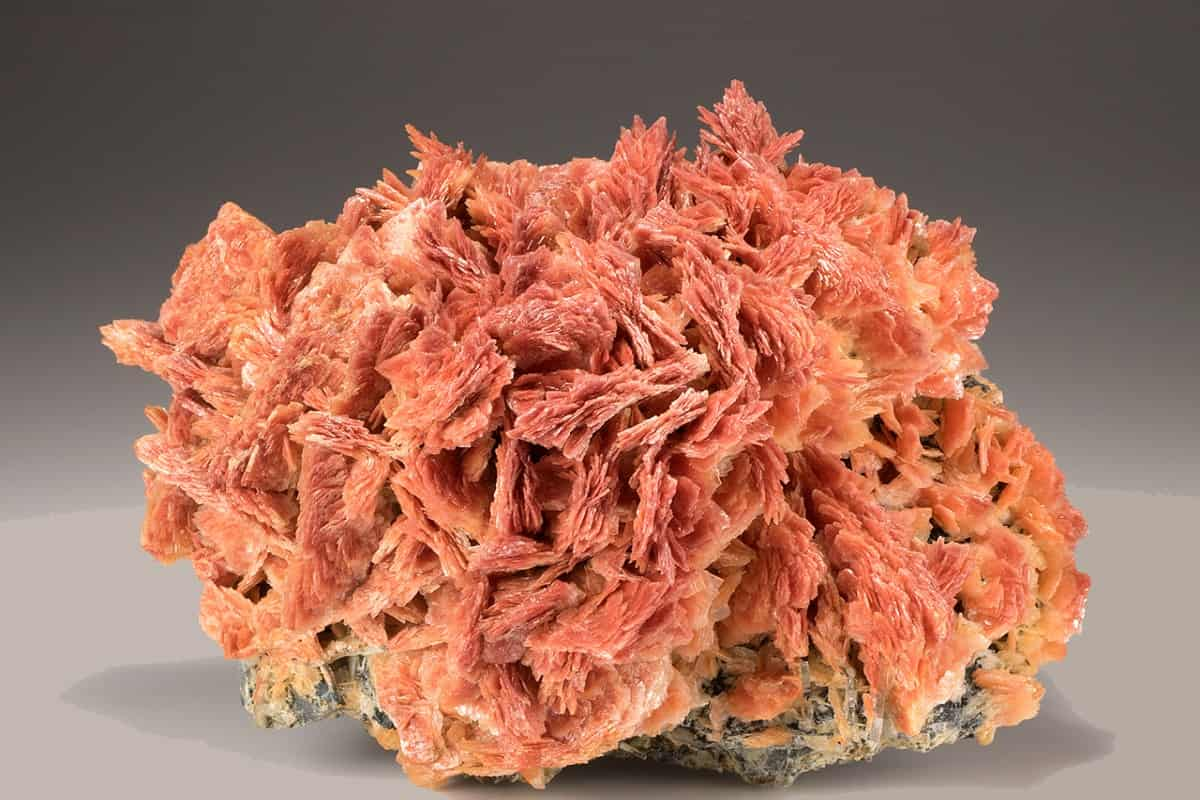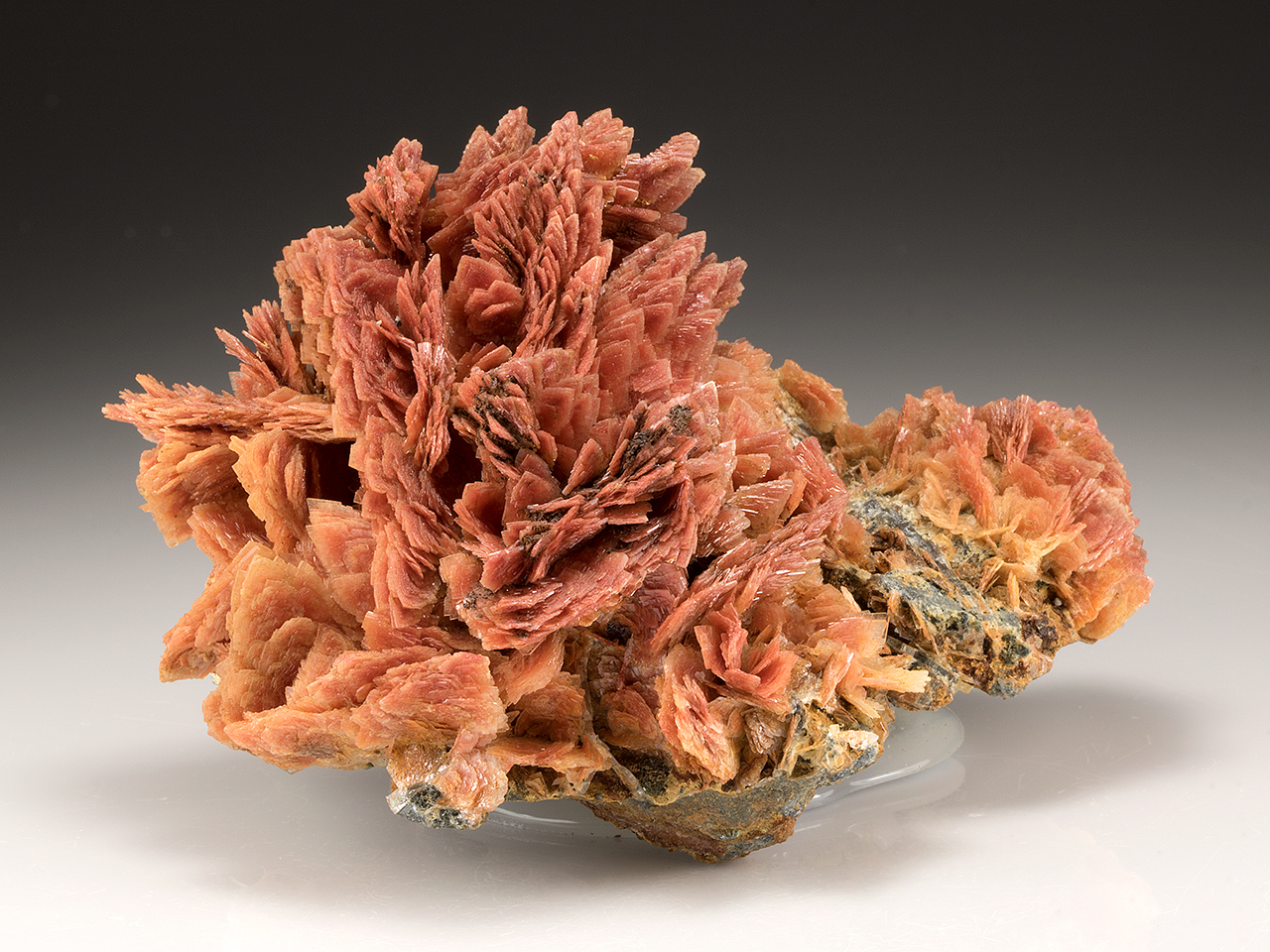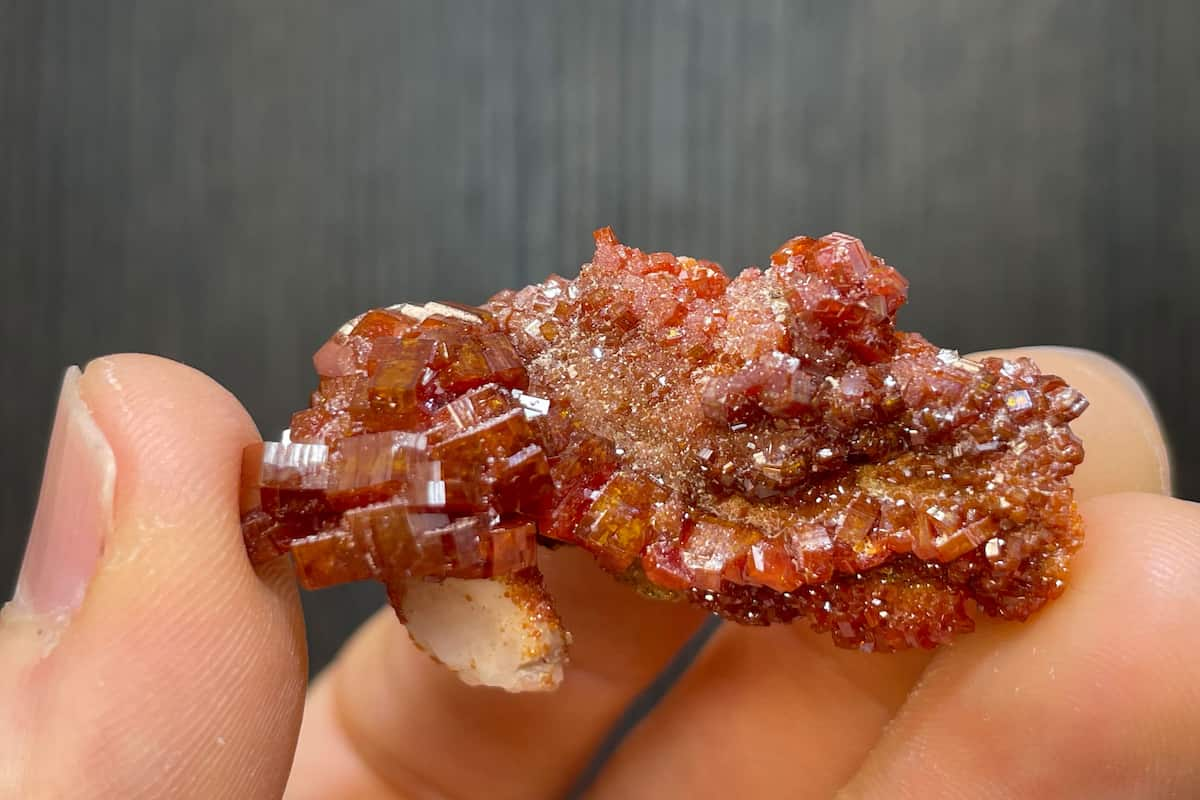What is Red Barite?
Red Barite is a variety of Barite, a mineral commonly found in sedimentary rocks and hydrothermal veins. Its primary component, barium sulfate (BaSO₄), makes it non-toxic, odorless, and chemically inert. The mineral’s distinctive red color is often due to iron oxide impurities, which give it a unique hue compared to other types of Barite.
Barite is well-known for its high density, and this property plays a significant role in its numerous applications. However, Red Barite is particularly sought after due to its aesthetic appeal, especially in applications where the color and texture are important.
Formation of Red Barite
Red barite owes its vibrant hue to intricate geological processes. Understanding the formation mechanisms and the factors influencing its distinct coloration is crucial to appreciating its uniqueness in the mineral kingdom.
Red Barite, also known as Red Baryte, is a mineral that has been gaining attention due to its unique properties and versatile applications in various industries. As a naturally occurring form of barium sulfate (BaSO₄), Red Barite is typically distinguished by its rich red or reddish-brown color. This article will explore the key properties, uses, and benefits of Red Barite, shedding light on why this mineral is crucial in both industrial and commercial sectors.
read more about yellow barite on vornaco.
Properties of Red Barite
Before delving into its uses, it’s essential to understand the physical and chemical properties of Red Barite. These properties define its suitability for various industrial applications.
Distinctive features set red barite apart from its counterparts. Examining these properties in comparison with other barite varieties unveils the mineral’s remarkable attributes that make it highly sought after in various industries.
1. Chemical Composition
-
Formula: BaSO₄
-
Density: 4.3–4.6 g/cm³
-
Hardness: 3–3.5 on the Mohs scale
-
Color: Ranges from deep red to reddish-brown, often with hints of orange or pink.
2. Physical Appearance
Red Barite crystals typically appear in tabular, prismatic, or bladed forms. The mineral may have a glassy or pearly luster, with the red coloration varying depending on the impurities present. The mineral’s red color is due to trace amounts of iron oxide, which sets it apart from other varieties of Barite, which are typically white or colorless.
3. Insolubility and Stability
One of the most important features of Red Barite is its chemical stability. It is insoluble in water, which makes it an excellent material for various industrial and chemical applications, especially where corrosion resistance is required.
4. High Specific Gravity
Red Barite has a high specific gravity, meaning it is denser than many other minerals. This property makes it especially useful in applications such as drilling fluids for oil and gas exploration, where high-density materials are essential.
read more about Barite Drilling Mud on vornaco.
Applications of Red Barite
From the depths of oil and gas drilling to the vibrant world of paint and coatings, red barite plays a pivotal role. This section explores the indispensable applications that make red barite a cornerstone in multiple industrial processes.
Red Barite’s unique properties make it valuable in a variety of industries. Here are the most common uses of this mineral:
1. Oil and Gas Industry
Red Barite is most widely known for its role in the oil and gas industry. It is commonly used as a drilling fluid additive in the form of barite mud. The high density of Red Barite helps to increase the weight of drilling fluids, providing the necessary pressure to prevent blowouts while drilling into oil and gas reservoirs. Barite mud also lubricates the drill bit, allowing for smoother and more efficient drilling.
The use of Red Barite in drilling fluids is especially beneficial in deepwater drilling operations, where precise control over the drilling process is essential.
2. Paint and Coatings Industry
Red Barite is used as a pigment in the paint and coatings industry, particularly for creating red-colored coatings. Due to its durability, high density, and non-toxic nature, it is widely applied in the production of paints used in automotive, industrial, and marine coatings. The mineral provides rich, long-lasting color and contributes to the overall durability of the paint.
3. Radiation Shielding
The high density of Red Barite makes it effective for radiation shielding. It is used in the construction of radiation barriers for medical facilities, research laboratories, and nuclear power plants. The ability of Red Barite to absorb gamma rays and x-rays makes it a critical material in these applications. Additionally, it is used in the manufacturing of radiation-resistant glass.
4. Glass Manufacturing
Red Barite is also used as a fluxing agent in the production of certain types of glass, particularly optical glass. Its high density helps to improve the strength and refractive index of the glass. In this application, Red Barite plays a role in producing specialized glass used in cameras, telescopes, and other optical instruments.
5. Cosmetics and Ceramics
In the cosmetic industry, Red Barite is used in the formulation of makeup products and beauty products. Its inert and non-toxic nature makes it a suitable ingredient in products such as foundations and blush. Additionally, Red Barite is used in ceramics as a filler in the production of glazes and pottery.
6. Industrial Uses
In addition to its use in the oil and gas industry, Red Barite is employed in a wide range of industrial applications. It is used in chemical production, where it serves as a precursor for barium compounds, and in construction as a weighting agent for concrete and as a radiation-absorbing additive in building materials.
7.Mining and Extraction
Unlocking the potential of red barite requires delving into its mining and extraction. This segment explores the locations of major deposits, the methods employed, and the environmental considerations that accompany the extraction process.
Unique Uses of red barite
Beyond conventional applications, red barite finds itself embraced in unexpected industries. Unraveling these unique uses showcases the versatility of this mineral and its adaptability to innovative endeavors.
Benefits of Red Barite
- 1. Environmental Safety
- Red Barite is non-toxic and environmentally friendly, making it safe for use in various industries, particularly in sectors such as cosmetics and pharmaceuticals, where health and safety are paramount. The mineral’s ability to be used without significant environmental impact is one of the reasons it has become a go-to material in various fields.
- 2. Durability
- The high density and chemical stability of Red Barite contribute to the long-lasting nature of products that incorporate it. Whether used in paints, coatings, or radiation shielding, Red Barite enhances the durability and effectiveness of these products, providing long-term protection and performance.
- 3. Cost-Effectiveness
- In applications such as drilling fluids and radiation shielding, Red Barite’s performance often justifies its cost. Its high efficiency in these processes means that less material is required, making it a cost-effective solution in many cases. The versatility of Red Barite across different industries further adds to its cost-effectiveness.
How to Source High-Quality Red Barite
To ensure you are getting the best quality Red Barite, it is important to source it from reputable suppliers. When selecting a supplier, consider the following:
-
Purity: Ensure the Red Barite is of high purity, with minimal impurities that could affect its performance in industrial applications.
-
Sustainability: Choose suppliers that adhere to sustainable mining practices to minimize environmental impact.
-
Quality Assurance: Look for certifications and quality assurance processes that guarantee the product’s consistency and effectiveness.
red barite Market Trends
As global industries evolve, so does the demand for red barite. Analyzing market trends and economic factors provides valuable insights into the present and future dynamics of this unique mineral.
Environmental Impact
While red barite contributes significantly to various industries, it’s essential to address its environmental impact. This section delves into sustainable practices and potential ecological concerns associated with red barite mining.
Case Studies about red barite
Real-world examples demonstrate red barite’s effectiveness in specific projects. Testimonials and feedback from industries provide tangible evidence of its positive impact on diverse applications.
Challenges and Solutions
No mineral is without its challenges. This segment explores the obstacles faced in red barite extraction and use, accompanied by innovative solutions and technological advancements addressing these hurdles.
Health and Safety Regulations
The well-being of those involved in red barite industries is paramount. This section examines occupational health considerations and the adherence to safety standards to ensure a secure working environment.
Global Distribution
Red barite deposits span the globe, influencing regional economies. An overview of these distributions provides a comprehensive understanding of the mineral’s reach and impact.
Cultural Significance
Delving into the historical uses and cultural references surrounding red barite offers a unique perspective. This section explores the symbolism associated with red barite, adding a layer of cultural significance to its narrative.
Conclusion
In conclusion, red barite emerges as not merely a mineral but a versatile and indispensable component in various industries. Its rich history, unique properties, and adaptability underscore its significance in our modern world.









